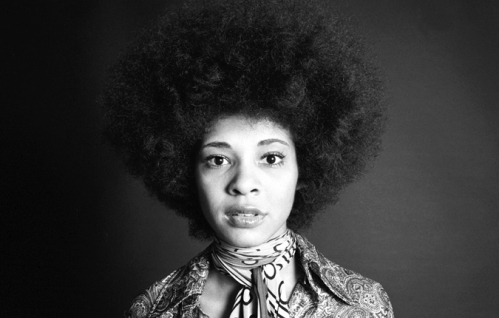
Sly & The Family Stone made key contributions to the overall musical landscape of the late 1960’s. And those contributions are still somewhat under explored in professional literary terms. Sly Stone himself took the funk of James Brown, then blended in a helping of Bay Area California psychedelic pop/rock. The results were enduring hits such as “Dance To The Music”, “Stand”, “I Wanna Take You Higher” and the full on funk breakthrough “Thank You Falettinme Be Mice Elf”. It was a racially and sexually integrated group too-with female instrumentalists and black and white members.
The Family Stone WERE the musical face of the American social revolutions of that late 60’s period. As the 70’s came in, the band and their times remained deeply connected to one another. Sly’s drug use, and resulting isolationism, impaired the bands ability to perform with him. In America at large, the all inclusive mass social protests of the late 60’s were giving way to a form of activism known by some as the “single issue cause”. Women, LGBT people and the black community were now each demanding to have their own voices heard as individual groups.
By the early 70’s some notions of sharing, peace and love became diminished as these individual groups fought for their own recognition. The same occurred within The Family Stone. As often happens with heavy drug users, Sly’s focus became more focused on his creativity. So for his 1971, originally titled Africa Talks To You, Sly utilized the talents of himself along with the late Ike Turner, Bobby Womack and Billy Preston more than the members of his band. This sense of isolation and disconnect from the world around Sly changed his creative focus for the late 1971 release of There’s A Riot Goin’ On.
“Luv ‘N Haight” starts out the album with a rumbling, motor like drum which is powered by heavy wah wah guitar/bass interaction. Its deeply funky groove wise. But the chorus scales up and down in the manner of classic Family Stone. “Just Like A Baby” is a slow, bluesy shuffle. Its melody is Clavinet based-played in its higher registers. That gets a bit lower with the economic bass and…what I’d guess would by Womack’s soulful guitar accents. Sly’s strained voice, also with a high pitched tone, flows in and out as an almost ghostly presence.
“Poet”s stop/start rhythm utilizes the Maestro Rhythm King 2 drum machine-along with layers of call and response Clavinet/bass/guitar interaction. “Africa Talks To You “The Asphalt Jungle”” takes on a very similar flavor-with Womack’s guitar again being a key melodic element-with some pulsing Moog bass assisting the live on towards the end. “Family Affair” again features the MRK2 drums playing a more steady rhythm-with the wah wah and Rose Stone singing the hook to Sly’s low,drunken sounding delivery along with a melodic electric piano counterpoint.
“Brave & Strong” uses both the MK2 drums and live ones-depending on how advanced the rhythms are. Cynthia and Jerry’s horns play their classic counterpoint to the bass/ guitar/ Clavinet interaction remaining at the center of the song. “(You Caught Me) Smiling” begins with a live drum/electric piano/Clavinet led pop/jazz type melodic statement before the slap bass and horn rises play the bluesy funk based vibe of the rest of the song-balancing the songs hesitant conceptual mood with separate musical statements. And it says a lot that the “title track” is merely a silent second of audio.
“Time” has a deeply slowed MK2 allows for Sly’s bluesy/soul jazz inspired organ and Clavinet melodies to accompany to fill in the vastly empty spaces of rhythm within the song-all along with his own vocals. The drum machine on “Spaced Cowboy” has a bossa style rhythm , while the live drum rocks right along to a wah wah/Clavinet based sound. Essentially, its a satire of blues tinged country/bluegrass type of song. “Runnin’ Away”s chorus has a steady drum, bass and organ sound to it. The refrain has the drums and bass get more rhythmically complicated-with the horns and guitar providing the melody.
“Thank You For Talkin’ To Me Africa” operates as a slowed down remake of “Thank You Falettine Me Be Mice Elf”-recorded for but not released on this album, with the bass, guitar and organ playing over the empty sections of the drum’s rhythm. That approach to Sly’s major funk innovation of the previous year showcases how, even there, his thematic focus was growing more paranoid. Especially as throughout this album, there are constant lyrical references to “feeling so good inside myself”, “frightened faces on the wall” and even declaring that “the brave and strong survive”.
There’s A Riot Goin’ On musically established Sly’s 70’s era sound. Its a spare one that’s based heavily in the organ styled MRK2 drum machine he was using-along with the bursts of different electric pianos with the bass/guitar interaction. Only on two occasions (in the albums hit songs “Family Affair” and “Runnin’ Away”) did the more brightly melodic singalong style of late 60’s Sly & The Family Stone shine through strongly. Otherwise, the album (both musically and lyrically) emphasizes that connection between both Sly and politicized Americans as turning inward as the 70’s began.
Riot isn’t a Sly album that I personally take out and listen to very often. While musically its very innovative in terms of how the funk genre was progressing? The album’s psychedelic element lacks a sense of musical form and structure that functions so well for Sly Stone-both before and after this album. Yet as an aural psychedelic funk work of art, There’s A Riot Goin’ On might be its own self contained 45 minute musical sub genre. The fact that its an album that exists in its own musical world goes right with its reflection of Sly’s shift from talking to the people to talking more as an individualist.

